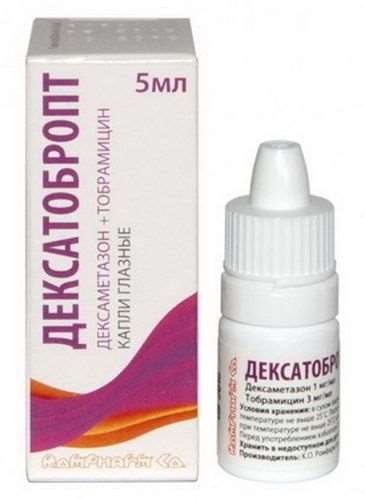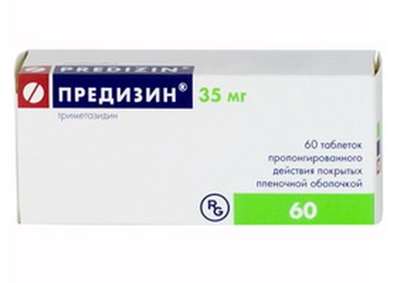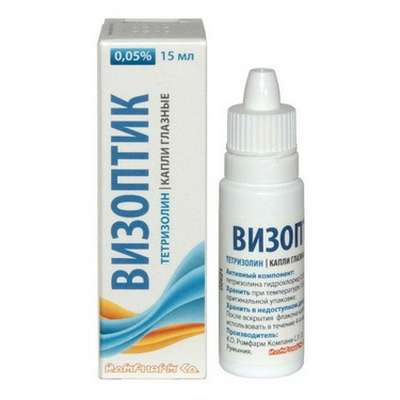Instruction for use: Enoxaparin sodium
I want this, give me price
Trade name of the drug – Clexane; Eniksum; Hemapaksan; Anfiber; Sodium Enoxaparin
The Latin name of the substance Enoxaparin sodium
Enoxaparinum natrium (genus. Enoxaparini natrii)
Chemical name
Low molecular weight heparin, with a molecular weight of more than 4,500 daltons
Gross formula
(C26H40N2O36S5)n
Pharmacological group:
Anticoagulants
The nosological classification (ICD-10)
I20.0 Unstable angina: heberden disease; Angina pectoris; The attack of angina pectoris; recurrent angina; Spontaneous angina; Stable angina pectoris; Angina rest; Angina progressing; Angina mixed; Angina spontaneous; stable angina; Chronic stable angina; Angina Syndrome X
I21 Acute myocardial infarction: Myocardial infarction in the acute phase; Acute Myocardial Infarction; Myocardial infarction with pathologic Q wave and without; Myocardial infarction complicated by cardiogenic shock; Infarction left ventricular; Transmural myocardial infarction; Myocardial infarction netransmuralny (subendocardial); Netransmuralny myocardial infarction; Subendocardial myocardial infarction; The acute phase of myocardial infarction; Acute myocardial infarction;Sub-acute phase of myocardial infarction; Subacute phase of myocardial infarction; Thrombosis of the coronary arteries (the arteries); Threatened myocardial infarction; Myocardial infarction without Q wave
I26 Pulmonary embolism: Recurrent thromboembolism of the pulmonary artery; Recurrent pulmonary embolism; Thromboembolism of the branches of the pulmonary artery; Thromboembolism of the lungs; Thromboembolism of the pulmonary artery (PE); Thrombosis of the pulmonary artery; Thromboembolism; Thromboembolism of the pulmonary artery; Thromboembolism; Pulmonary embolism; Thromboembolism of the pulmonary artery and its branches; Thromboembolism of pulmonary vessels; Embolism of the lung; Embolism of the pulmonary artery; Acute massive thromboembolism of the pulmonary artery
I82 Embolism and thrombosis of other veins: Recurrent venous thrombosis; Postoperative thrombosis; Venous thrombosis; Acute venous thromboembolism; Recurrent vein thrombosis; Venous thrombosis; Thrombosis of veins of internal organs; Venous thrombosis; Deep vein thrombosis; Thrombosis of blood vessels; Vascular thrombosis; Thrombosis of veins; Deep vein thrombosis; Thromboembolic diseases; Thromboembolism of veins; Severe venous thrombosis; Embolism; Embolism of veins; Thromboembolic complications
I82.9 Embolism and thrombosis of unspecified vein: Venous embolism; Venous thrombosis; Diseases caused by blood clots in the vessels; Acute vascular occlusion; Acute venous thrombosis; Acute thrombosis of veins; Thrombosis; Thromboembolism; Phlebothrombosis; Embolism
J96 Respiratory failure, not elsewhere classified: Hypoxic states; Hypoxia; Respiratory failure; Oxygen deficiency; Insufficiency of breathing; Insufficient oxygenation of the blood; Acute hypoxia; Acute respiratory failure; Acute hypoxic condition; Psychogenic dyspnea; Hypoxic syndrome; Inhibition of respiration in pneumonia and other infectious diseases; Inhibition of the respiratory center in pneumonia and other infectious diseases; Chronic hypoxia; Tachypnea
Z100 * CLASS XXII Surgical practice: Abdominal surgery; adenomectomy; Amputation; Coronary angioplasty; Angioplasty of the carotid arteries; Antiseptic skin treatment for wounds; Antiseptic Hand; Appendectomy; atherectomy; Balloon coronary angioplasty; Vaginal hysterectomy; The coronary bypass; Interventions in the vagina and cervix; Interventions on the bladder; Intervention in the mouth; Restoration and reconstructive surgery; Hand hygiene of medical personnel; Gynecologic surgery; Gynecological intervention; Gynecological surgery; Hypovolemic shock during operations; Disinfection of purulent wounds; Disinfection of wounds edges; Diagnostic intervention; Diagnostic procedures; Cervical Diathermocoagulation; Long-surgery; Replacing the fistula catheters; Infection in orthopedic surgery; Artificial heart valve; cystectomy; Short-term outpatient surgery; Short-term operation; Short surgical procedures; Krikotireotomiya; Blood loss during surgery; Bleeding during surgery and in the postoperative period; Kuldotsentez; laser photocoagulation; laser coagulation; retinal laser coagulation; Laparoscopy; Laparoscopy in Gynecology; CSF fistula; Small gynecological operations; Small surgical procedures; Mastectomy and subsequent plastic; mediastinotomy; Microsurgical operations on the ear; Mukogingivalnye operation; suturing; Minor surgery; neurosurgical operation; Immobilization of the eyeball in ophthalmic surgery; testectomy; pancreatectomy; Perikardektomiya; The period of rehabilitation after surgery; The period of convalescence after surgery; Percutaneous transluminal coronary angioplasty; Pleural thoracentesis; Pneumonia postoperative and posttraumatic; Preparation for surgical procedures; Preparation for surgery; Preparation of the surgeon's hands before surgery; Preparation of the colon for surgical procedures; Postoperative aspiration pneumonia in neurosurgical and thoracic surgery; Postoperative nausea; Postoperative bleeding; postoperative granuloma; postoperative shock; The early postoperative period; myocardial revascularization; Radiectomy; gastric Resection; bowel resection; uterine Resection; liver Resection; enterectomy; Resection of part of the stomach; Reocclusion of the operated vessel; Bonding tissues during surgical procedures; Removal of sutures; Condition after eye surgery; Condition after surgery; Condition after surgery in the nasal cavity; Condition after gastrectomy; Status after resection of the small intestine; Condition after tonsillectomy; Condition after removal of the duodenum; Condition after phlebectomy; Vascular surgery; Splenectomy; Sterilization of surgical instruments; Sterilization of surgical instruments; sternotomy; Dental surgery; Dental intervention in periodontal tissues; strumectomy; Tonsillectomy; Thoracic surgery; Thoracic surgery; total gastrectomy; Transdermal intravascular coronary angioplasty; Transurethral resection; Turbinektomiya; Removal of a tooth; cataract surgery; Removal of cysts; tonsillectomy; Removal of fibroids; Removing the mobile primary teeth; Removing polyps; Removing broken tooth; Removal of the uterus body; Removal of sutures; Fistula likvoroprovodyaschih ways; Frontoetmoidogaymorotomiya; Surgical infection; Surgical treatment of chronic limb ulcers; Surgery; The surgery in the anal area; The surgery on the colon; Surgical practice; The surgical procedure; Surgical interventions; Surgery on the gastrointestinal tract; Surgical procedures on the urinary tract; Surgical procedures on the urinary system; Surgical intervention of the genitourinary system; Surgical procedures on the heart; Surgical manipulation; surgery; Surgery on the veins; Surgical intervention; Vascular surgery; Surgical treatment of thrombosis; Surgery; cholecystectomy; Partial gastric resection; hysterectomy; Percutaneous transluminal coronary angioplasty; Percutaneous transluminal angioplasty; Coronary artery bypass; tooth Extirpation; Extirpation of milk teeth; pulpectomy; pulsative cardiopulmonary bypass; tooth Extraction; teeth Extraction; cataract extraction; Electrocoagulation; endourological intervention; episiotomy; Etmoidotomiya; Complications after tooth extraction
Z49.1 Aids that include extracorporeal dialysis: hemodialysis; Chronic hemodialysis; Extracorporeal circulation; Thrombosis of hemodialysis shunt
CAS code
9005-49-6
Characteristics of substance Enoxaparin sodium
Low molecular weight heparin with an average molecular weight of 4,500 daltons.
Pharmacology
Mode of action - Antithrombotic.
It has a direct anticoagulant effect, inhibits thrombokinase (factor Xa), inactivates thrombin (factor IIa).
Quickly and completely absorbed after SC administration, Cmax (1.6 μg / ml) is achieved after 3-5 hours at a dose of 40 mg. A minor part undergoes biotransformation. It is excreted by the kidneys with T1 / 2 4 h (with renal failure and in the elderly 5-7 h). Anti-Xa activity persists in the blood for 24 hours.
Application of substance Enoxaparin sodium
Prevention of venous thrombosis and thromboembolism (especially in orthopedic practice and general surgery), incl. In patients with therapeutic illnesses on a bed rest (chronic heart failure III or IV class NYHA, acute respiratory failure, acute infection, acute rheumatic conditions in combination with a risk factor of venous thrombosis). Treatment of deep vein thrombosis in combination with or without pulmonary embolism. Prevention of coagulation in the extracorporeal circulation system during hemodialysis. Treatment of unstable angina and myocardial infarction without Q wave (in combination with acetylsalicylic acid).
Contraindications
Hypersensitivity (including to heparin or its derivatives, including other low molecular weight heparins); Conditions and diseases in which there is a high risk of bleeding: threatening abortion, cerebral aneurysm or exfoliating aortic aneurysm (with the exception of surgical intervention), hemorrhagic stroke, uncontrolled bleeding, severe enoxaparin and heparin-induced thrombocytopenia, age 18 years (efficacy and Safety not established).
Restrictions
Hemostasis disorders (including hemophilia, thrombocytopenia, hypocoagulation, von Willebrand disease), severe vasculitis, peptic ulcer or duodenal ulcer or other erosive-ulcerative gastrointestinal lesions; Recent ischemic stroke, uncontrolled severe arterial hypertension, diabetic or hemorrhagic retinopathy, severe diabetes mellitus, recent or prospective neurologic or ophthalmic surgery, spinal or epidural anesthesia (potential risk of hematoma), spinal puncture (recently transferred), recent Birth, endocarditis bacterial (acute or subacute), pericarditis or pericardial effusion, renal and / or hepatic insufficiency, intrauterine contraception (IUD), severe trauma (especially the CNS), open wounds on large surfaces; Simultaneous reception of drugs that affect the hemostatic system.
Pregnancy and breast-feeding
Do not use during pregnancy, except when the potential benefit to the mother exceeds the potential risk to the fetus.
It is not recommended for pregnant women with artificial heart valves.
The action category for fetus by FDA is B.
At the time of treatment should stop breastfeeding.
Side effects of the substance Enoxaparin sodium
Thrombocytopenia (asymptomatic, immunoallergic), intracranial hematoma (with spinal anesthesia) and paralysis, elevation of liver enzymes, cutaneous or systemic allergic reactions, bleeding, injection site - inflammation, pain, bruises, knots, necrosis.
Interaction
Incompatible with other drugs affecting hemostasis: NSAIDs (except acetylsalicylic acid), dextran -40, ticlopidine, thrombolytics, etc.
Overdose
Symptoms: bleeding.
Treatment: slow IV injection of protamine sulfate.
Routes of administration
SC.
Precautions for the substance Enoxaparin sodium
You cannot enter IM. With thrombocytopenia, induced by heparin, history can be prescribed in exceptional cases due to the risk of immunoallergic thrombocytopenia, manifested after 5-24 days. With a decrease in the number of platelets below 50% of the norm, enoxaparin is canceled.

 Cart
Cart





